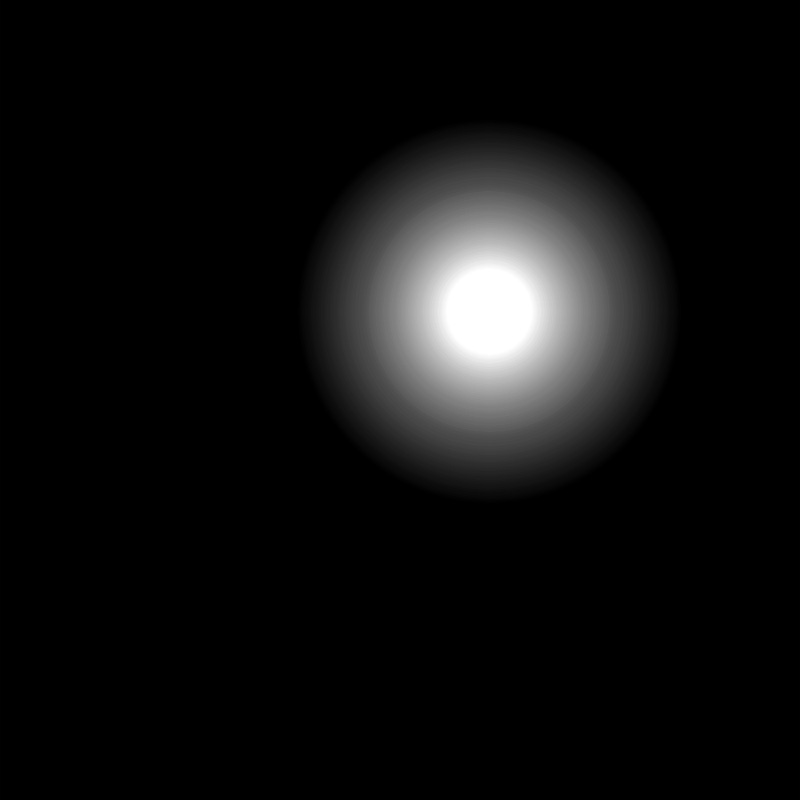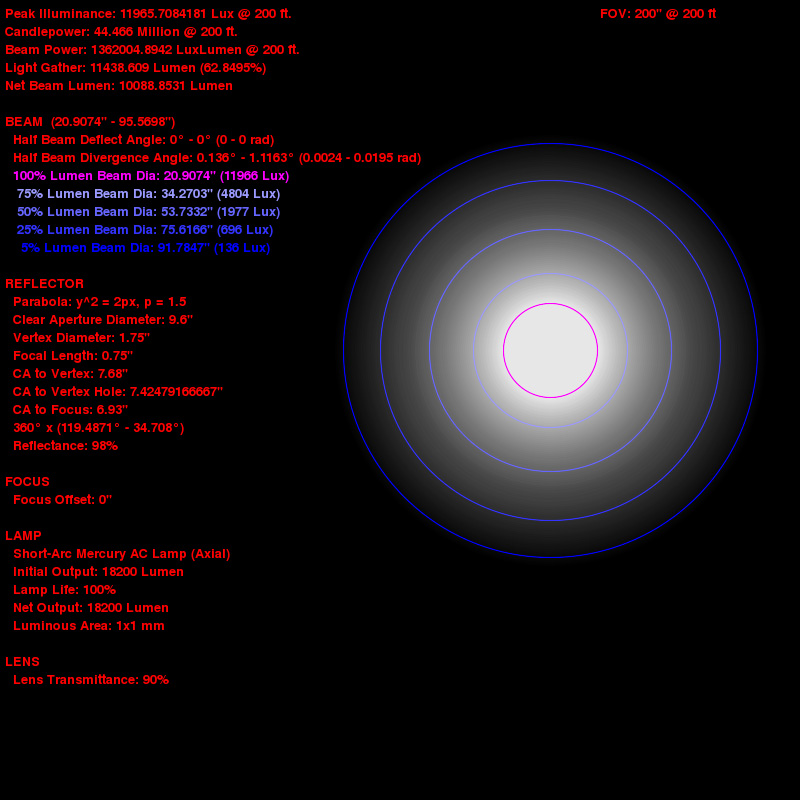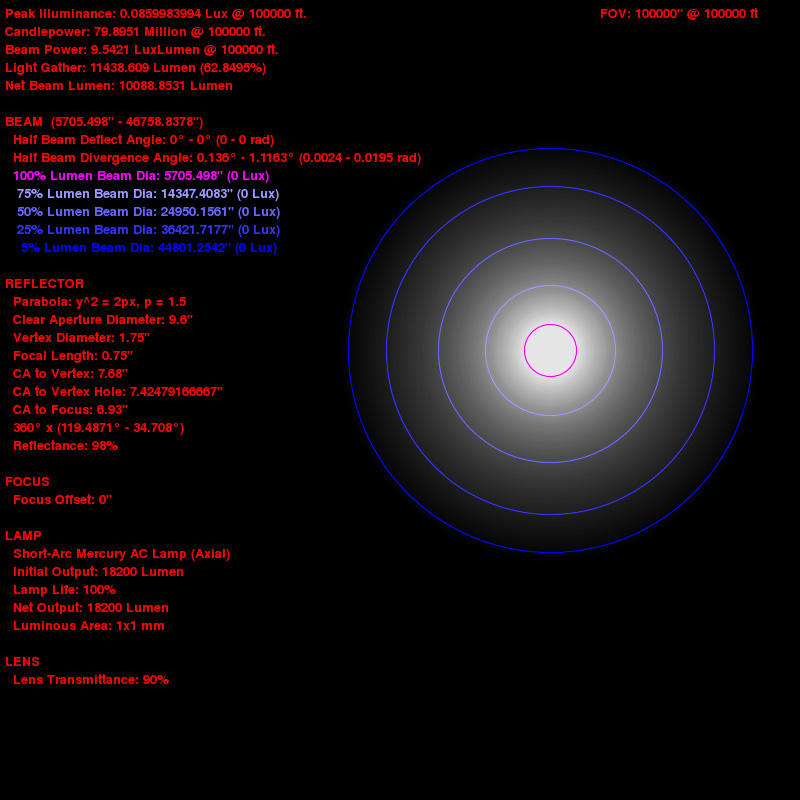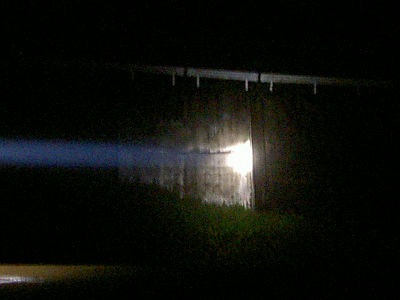get-lit
Flashlight Enthusiast
I calculated MCP at various distances with your configuration having 18200 Lamp Lumen (estimated from 70 L/W x 260W), 98% Reflectance AQ Reflector and 90% Transparent Polycarbonate Lens.
200' 44.465 MCP
500' 60.505 MCP
750' 65.83 MCP
1000' 68.87 MCP
2000' 74.02 MCP
3000' 75.915 MCP
4000' 76.9 MCP
5000' 77.505 MCP
10000' 78.745 MCP
100000' 79.895 MCP
1000000' 80.015 MCP
10000000' 80.02 MCP
10000000' 80.025 MCP
100000000' 80.025 MCP
I'm sure there's some info out there somewhere about light absorption/scatter with distance through the atmospheric conditions that would allow you to determine the optimal measurement distance for your light. I'll do some reading. That Polycarbonate is blocking pretty much ALL of the UV light BTW, but the bugs still use the blue light to find food.
EDIT: With thin dry clean air, visible light is not absorbed through the entire thickness of the atmosphere, however light toward the blue end of the spectrum does scatter through the atmosphere, which is why you see a blue beam with a white spot. So the blue light scatter is really the only hindrance. Probably the best bet is to take the measurement as far as you can in clean dry high altitude air, measure the color temp and measure it up close, and then compare the different color temps to calculate the amount of blue light lost at the measured distance so you can add it in.
With all this in mind, it makes me wonder what one is able to claim the actual CP of their light is. Theoretically, your light is 80 MCP in space, but you can't use the light in space and 0.00086125 lux at 189 miles for 80 MCP is not very usable, although it's still well within our threshold of low light Scotopic vision (0.00001 lux). Maybe there should be a real world CP rating (@1 lux) and a SVCP (Space Visible Candle Power) rating :thinking:
For a real world calculation in your case, you'd get 1 lux at 29,250 ft (5.539 miles) giving you 79.58 MCP, which rounds to 80 MCP anyhow. If you were to take a measurement at that distance, you'd have to use a highly accurate lux meter and zero it with the ambient light, and compensate for atmospheric blue light loss using a color temp meter.
I think it's more than fair to compensate for blue light loss with a real world CP rating because seeing the beam in the air is a huge part of the fun of these lights. On the other hand, you wouldn't compensate for blue light loss if you were only concerned with light on target, say for search and rescue missions etc. It would probably be a significant difference since these are high Kelvin lights. I think true search and rescue lights should ideally be low Kelvin so you only see the light on target and not the beam, but high Kelvin is much more fun in the sky.
Aside from all the ranting, if you get a good enough measurement at 5-1/2 miles and compensate for atmospheric blue light loss, you have yourself an 80 MCP light :thumbsup:
200' 44.465 MCP
500' 60.505 MCP
750' 65.83 MCP
1000' 68.87 MCP
2000' 74.02 MCP
3000' 75.915 MCP
4000' 76.9 MCP
5000' 77.505 MCP
10000' 78.745 MCP
100000' 79.895 MCP
1000000' 80.015 MCP
10000000' 80.02 MCP
10000000' 80.025 MCP
100000000' 80.025 MCP
I'm sure there's some info out there somewhere about light absorption/scatter with distance through the atmospheric conditions that would allow you to determine the optimal measurement distance for your light. I'll do some reading. That Polycarbonate is blocking pretty much ALL of the UV light BTW, but the bugs still use the blue light to find food.
EDIT: With thin dry clean air, visible light is not absorbed through the entire thickness of the atmosphere, however light toward the blue end of the spectrum does scatter through the atmosphere, which is why you see a blue beam with a white spot. So the blue light scatter is really the only hindrance. Probably the best bet is to take the measurement as far as you can in clean dry high altitude air, measure the color temp and measure it up close, and then compare the different color temps to calculate the amount of blue light lost at the measured distance so you can add it in.
With all this in mind, it makes me wonder what one is able to claim the actual CP of their light is. Theoretically, your light is 80 MCP in space, but you can't use the light in space and 0.00086125 lux at 189 miles for 80 MCP is not very usable, although it's still well within our threshold of low light Scotopic vision (0.00001 lux). Maybe there should be a real world CP rating (@1 lux) and a SVCP (Space Visible Candle Power) rating :thinking:
For a real world calculation in your case, you'd get 1 lux at 29,250 ft (5.539 miles) giving you 79.58 MCP, which rounds to 80 MCP anyhow. If you were to take a measurement at that distance, you'd have to use a highly accurate lux meter and zero it with the ambient light, and compensate for atmospheric blue light loss using a color temp meter.
I think it's more than fair to compensate for blue light loss with a real world CP rating because seeing the beam in the air is a huge part of the fun of these lights. On the other hand, you wouldn't compensate for blue light loss if you were only concerned with light on target, say for search and rescue missions etc. It would probably be a significant difference since these are high Kelvin lights. I think true search and rescue lights should ideally be low Kelvin so you only see the light on target and not the beam, but high Kelvin is much more fun in the sky.
Aside from all the ranting, if you get a good enough measurement at 5-1/2 miles and compensate for atmospheric blue light loss, you have yourself an 80 MCP light :thumbsup:
Last edited:










